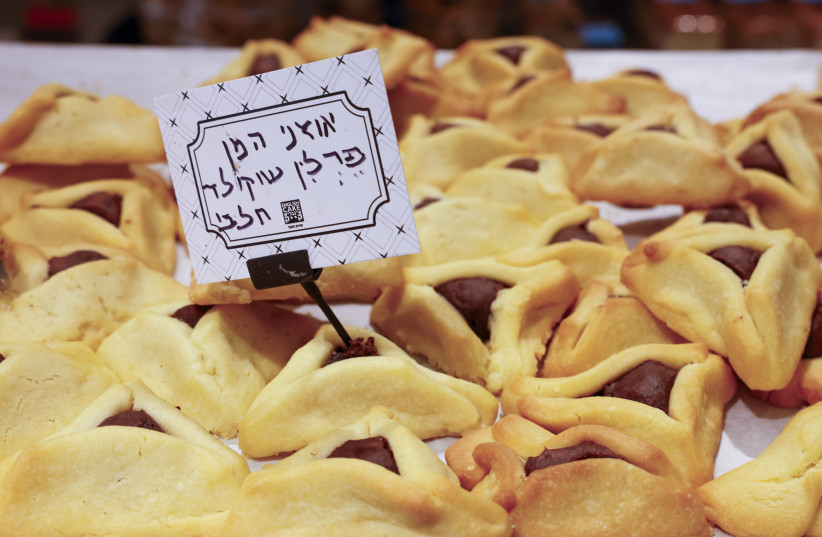Palestinian flag on Mordechai’s tomb: Purim in Iran finds local Jews in a tight spot
Purim, the Jewish Festival of Masks commemorating the salvation of Jews of the Achaemenid Empire from the evil extermination plot of the king’s advisor Haman, has taken an alarming twist during the past few years in Iran. This includes accusing Jews of perpetrating crimes against Iranians in ancient times, as well as limiting or hindering Jewish celebrations of the holiday.
This year a picture from the Iranian city of Hamadan went viral, showing a Palestinian flag hung defiantly right at the entrance of the shrine where, according to Jewish tradition, the graves of the heroes of the Book of Esther, Queen Esther and Mordechai, are believed to be; a flag found by the chief rabbi of Iran by surprise.
This shrine has long time served as a place of Jewish pilgrimage and has been subject of vandalism and obstructions several times in the past, including instances of arson, demonstrations in front of the shrine with Hezbollah flags and signs reading “Death to Israel,” and more. In a country where the right of peaceful assembly is rarely honored unless aligned with, if not ordered by the regime, these demonstrations are even more meaningful.
One allegation constantly pointed at Jews during Purim is the perpetration of the so-called “Holocaust of Iranians.” In this context, one user uploaded an elaborate infographic referring to an Iranian tradition to travel through nature on the 13th of the Iranian month of Badar, claiming that on this day, “Esther, a Jewish lover of King Achashverosh, exploited the king’s state of inebriation to pass a decision to commit genocide against all non-Jews, and once Iranians heard that – they escaped to the mountains and outside the cities to find asylum.”
The infographic also claimed that following this decision, 75 thousand Iranians were murdered with 15 Iranian nations were lost forever; and that Jews celebrate this brutal murder by consuming blood-tainted food and wine and eating food shaped like the hat of Haman.

Another user published a picture of a doll being hung in what apparently looks like an Israeli street, claiming that it is a personification of an Iranian woman and adding: “On the eve of the anniversary of the ‘Iranian holocaust,’ Israel is preparing for the Purim celebration, hanging the dolls of Iranian women. And then Iranian sellouts who worship Israel also bend over backward to defend racist Jews!”
A third user referred to Purim as “the holiday of the slaughtering of Iranians” adding that Haman was “an Iranian minister murdered by Esther and Mordechai;” while another one pointed to the picture mentioning ironically the well-known Iranian protest slogan “woman, life, freedom.”
Dr. Thamar Elam Gindin, Writer and Iran expert from Haifa University, added:
“Like every Purim, this year too, Iranian antisemitic social media users repeat the Iranian version of the Esther story, and the tomb of Esther and Mordechai in Hamedan is under attack. Their story is based on the Book of Esther and some verses in the Quran that refer to Jews as liars. This allows them freedom to tell the story based much on imagination.
“The story as told on the web is, mainly, that Esther and Mordechai killed 77,000 Iranians, which is the first genocide in history, and since then Jews celebrate Purim, whose other name is “the holiday of killing Iranians” (Jashn-e Iranikoshi) and eat symbolic body parts of Iranians (reference to Hamantaschen, named in Hebrew “Haman ears”) originally baked with the blood of little Iranian children.
“Every year, I have to explain to Iranians on social media and news outlets that the Book of Esther is the only source of the story and that it complies with all the necessary requirements of an ancient Near East New Year myth. I also have to explain time and again that judging a 2500-year-old story by 21st-century values is wrong.”
Iran’s Jewish community
Iran is home to an estimated 10,000 Jews, out of an approximate 145,000 before 1948. The Jewish community boasts a permanent representative in the Iranian Majlis (parliament), as well as religious services including slaughtering, ritual bathing and temples. However this small minority is regularly monitored and scrutinized under the totalitarian regime of the Islamic Republic for fear of ties to Israel, with some reports pointing at a coercion by authorities to carry out staged anti-Israel protests.
Additionally, Jews who have left Iran mentioned many instances of popular and institutional antisemitism culminating in legal, verbal and even physical violence, with a recent Telegram note from the Jewish community administration to keep a low profile during holidays.





Comments are closed.